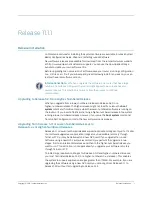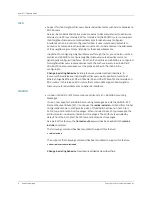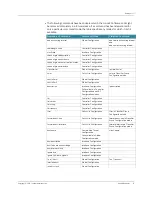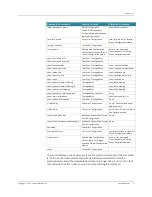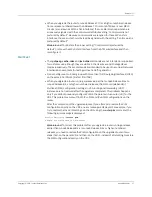
JunosE 11.1.1 Release Notes
14
Known Behavior
Copyright © 2010, Juniper Networks, Inc.
z
The following message might be displayed under certain conditions:
bgpConnections (default,0.0.0.0): TCP error code xx (...) occurred while accepting inbound
TCP connection
The message is generated when an unconfigured peer attempts to establish a TCP
session with an E Series router and a valid route to the source address of the peer is
absent from the router’s routing table.
If a valid route exists in the routing table, the following message is displayed when an
unconfigured peer attempts to establish a TCP session with an E Series router;
X.X.X.X is the source address of the unconfigured peer:
NOTICE 08/29/2001 16:50:11 bgpConnections (default,X.X.X.X): Inbound connection refused
- no peer X.X.X.X configured in core
BGP/MPLS VPNs
z
In a scaled environment, we recommend that you increase the hold timers for the
following protocols to appropriate values, based on the level of complexity of the
network and scaling settings, so as to enable graceful restart to be completed
successfully. [Defect ID 184974]
−
BGP
−
IS-IS
−
LDP
−
OSPF
−
RSVP
z
NAT does not function properly with secondary routing table lookup (fallback
global) or global export mapping on the VRF.
B-RAS
z
Pool groups are not supported; although the
ip local pool group
command appears
in the CLI, it is not supported.
z
If the router is under a heavy load, the
show profile
command might take longer than
usual to execute.
Work-around
: You can either delay examination of profiles until the router is less
busy, or save a copy of the profile to a text file off the router.
Bridged Ethernet
z
The CLI erroneously permits you to configure
bridge1483
encapsulation over
AAL5MUX IP even though that configuration is not supported.
CLI
z
In Interface Configuration mode for a major interface, the CLI displays options for
protocols that are not supported by that interface type.
z
When you issue the
reload
command on an ERX310 router, the command might
display a warning message that erroneously indicates that a synchronizing operation
will be performed. Any references to synchronization that appear in command
output or system messages do not apply to the ERX310 router, which does not
support SRP module redundancy.


